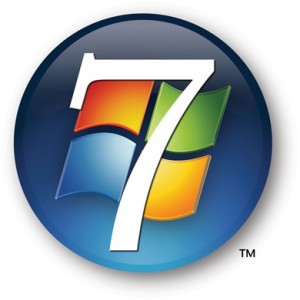How to Speed Up Windows Seven OS ?

With
the release of Windows 7, Microsoft may just have introduced the
fastest operating system in the world. For those speed junkies who are
never satisfied, we have provided a few tips that will help you make
your PC even faster.
Disable Automatic Disk Defragmentation
The
Automatic Disk Defragmentation feature in Windows is designed to
maintain the health of the operating system. However, it also makes
Windows run a little slower. You can put an end to this by disabling the
feature and manually running at your leisure. To do so, click “Start”
and select “Computer.” Next, right click on your primary hard drive and
select “Properties.” Lastly, select the “Tools” tab, click “Defragment
Now” and uncheck the “Run on a schedule” option.
Utilize ReadyBoost
ReadyBoost
is a built-in Windows 7 feature that allows you to use a USB flash
drive to enhance system performance. How is this possible? The drive
itself acts as additional computer memory!
In
order to make use of this feature, you will need a USB drive with at
least 2 GB of space. From there, you simply connect the drive to your
computer, click “Start” and select “Computer.” Next, click on the USB
drive and select “ReadyBoost.” Lastly, select “Use this device” and
choose as much capacity as possible below on the “Space to reserve for
system speed” slide.
Disable Windows Transparency
The
transparency of windows is a great perk from a presentation aspect, but
this may not be the case for those with older hardware as it can
drastically impact performance. The good thing is that transparency can
be disabled with ease. Simply right-click on your desktop, select
“Personalize,” choose the active theme and then navigate to “Windows
Color.” Finally, uncheck the “Enable Transparency” option.
Disable Unwanted Features
There
may be numerous Windows 7 features that you really don’t need. These
same features could also slow down your computer. To disable them, click
on “Start,” choose “Control Panel” and then select “Programs and
features.” Next, select the “Turn Windows features on or off” option,
navigate through the list and uncheck all the features you want to
disable. Once you are done, simply click “OK” to remove those features.
Disable Startup Services
Startup
services are notorious for slowing down performance in XP and Vista.
The same holds true for Windows 7. You can disable unwanted services by
hitting “Start,” typing “msconfig” in the search bar and clicking
“Enter.” Click the “Services Tab” on the next window and deselect the
services you do not want to automatically run at startup. While this all
depends on preference, services that impact performance the most
include “Offline Files,” “Tablet PC Input Services,” Terminal Services,”
“Fax” and “Windows Search.”
Disable Minimizing/Maximizing Animations
Many
users have already fallen in love with the minimizing and maximizing
animation effects of windows. However, some may find it irritating after
a while as it can eventually lead to slowdowns. If you want to disable
this function, hit “Start,” enter “System Properties Performance” in the
search bar and click “OK.” On the next screen, deselect the “Animate
window when minimizing and maximizing” option and click “OK.”
Update Your Windows 7 Drivers
Lastly,
ensure that you have the latest device drivers made specifically for
Windows 7. Since your PC can have hundreds of drivers installed in it at
any given time, this task can be tedious. Luckily there are 3rd party
utilities out thee such as DriverFinder™, which can greatly speed up this process.